Two days we will now spend at the western part of the Bwabwata National Park in Namibia.
We leave early because the heat is only bearable in the shade at midday.
To the Zambezi Mubala Lodge
Around noon we arrive at the reception of the Zambezi Mubala Lodge. A refreshing drink is served while our suitcases are already loaded onto a small motorboat. Where are we going now? It departs, the suitcases are gone and now it’s our turn. Wow, the small boat is moving fast, the sun is shining above us. The breeze is very much appriciated. We drive for twenty minutes, see people on the banks, they wave.
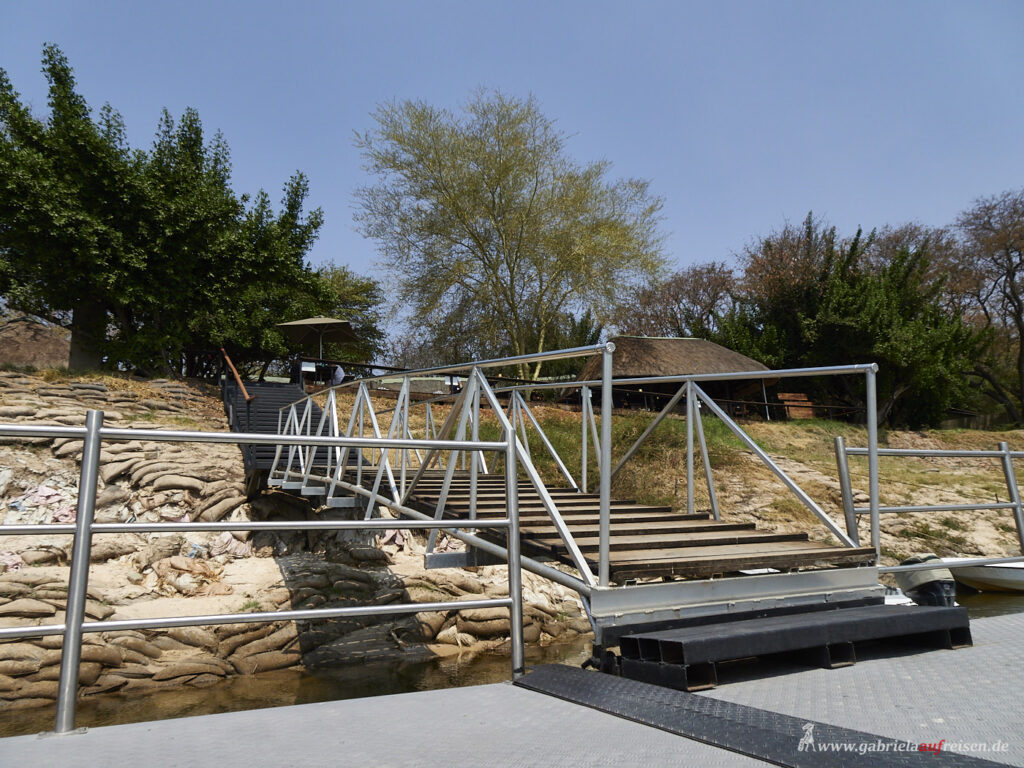
The hippos don’t wave, at most when they spread their droppings in the water with rotating tails to mark their territory. The Nile crocodiles are rather sluggish.
The lodge
Again, we are welcomed with a delicious cool drink. Our suitcases disappear almost as if by magic into our bungalows, which we reach via a wooden walkway. High above the river we have an incredible view from the veranda. The bungalows are very large, with a shower in the bathroom where a whole soccer team would have room. A kitchen area with refrigerator and fresh drinking water is waiting for us, I first make myself a coffee. The bedroom is also very spacious and the bed an oasis, so wonderfully comfortable it is.
A boutique invites us to shop. Later we buy the book about the Chariots of Fire, which contributes to the preservation of the population of the highly endangered bird species.
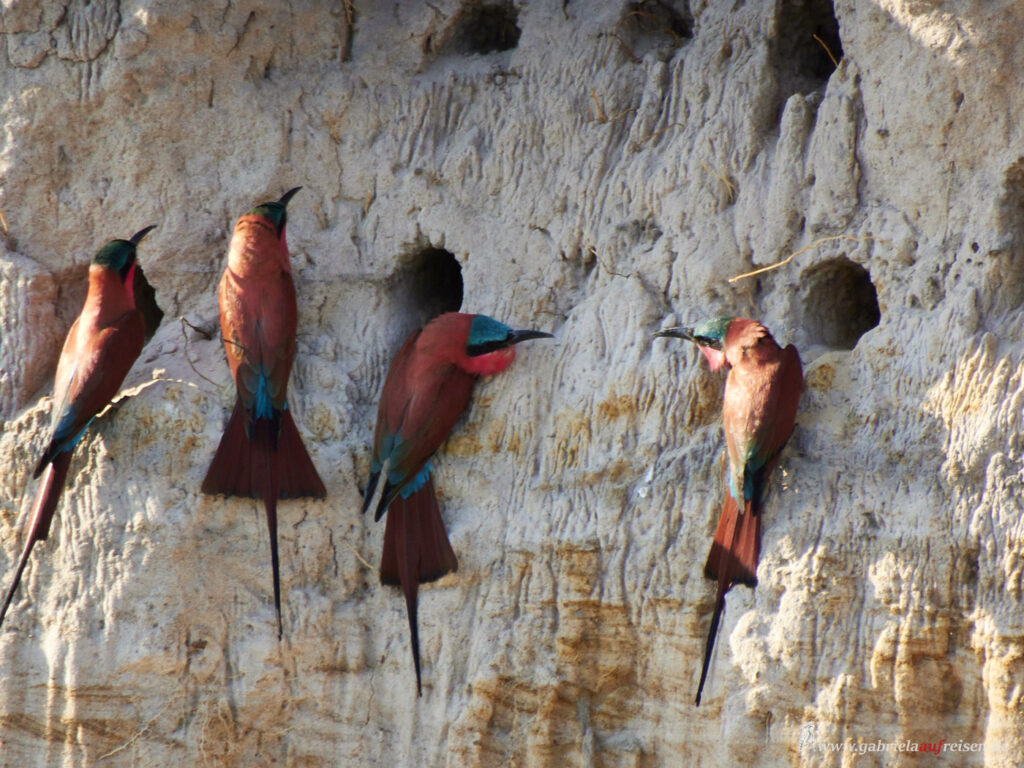
Southern Carmine Bee-eater on the Zambezi River
In the late afternoon we go up the river again. We visit the hippos again, but especially in the setting sun the protected colony of the Southern Carmine Bee-eater. They normally nest only in the sandy banks where they dig their nesting holes. However, there is also a colony here that digs their burrows in the loose sandy soil. For many years they were chased with nets, because in some countries of the Asian world it is chic to wear these bright red feathers. Now, thanks to the Gondwana Collection, they get protected around the clock by rangers.
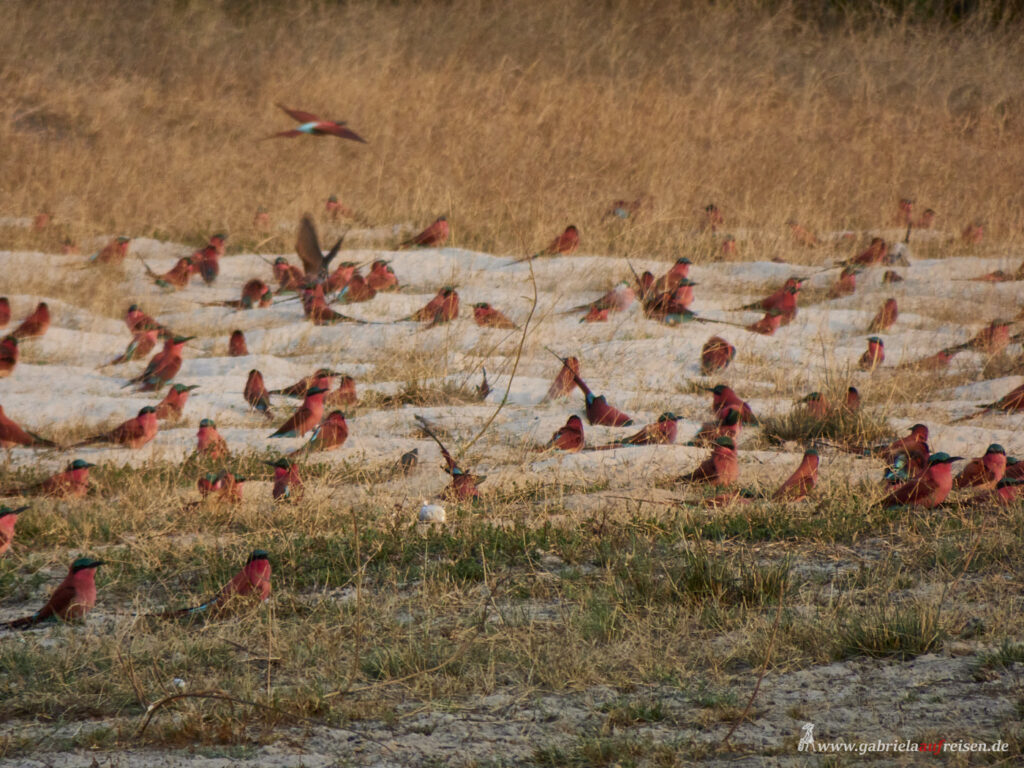
Unfortunately, we can only enjoy the delicious dinner and breakfast once in this lodge, because very early we have to move on. Before it gets too hot, in the morning we visit the
Historic Living Village of the Mashi ethnic group
In order to keep the traditions of the different ethnic groups alive for the following generations, there are some so called Living Museums. (Here you can learn something about the San- Bushmen I visited in 2019 .)
We are welcomed and are first introduced to
The Activities of the Men
First a mouse trap is explained to us, then various traps used to catch smaller or larger animals. A kind of drum with a clapper is used as a call to attract hippos. After that we get an explanation how tools are made, including the processing of iron. Also interesting are the various musical instruments, the mouth organ is not unlike ours, only larger.
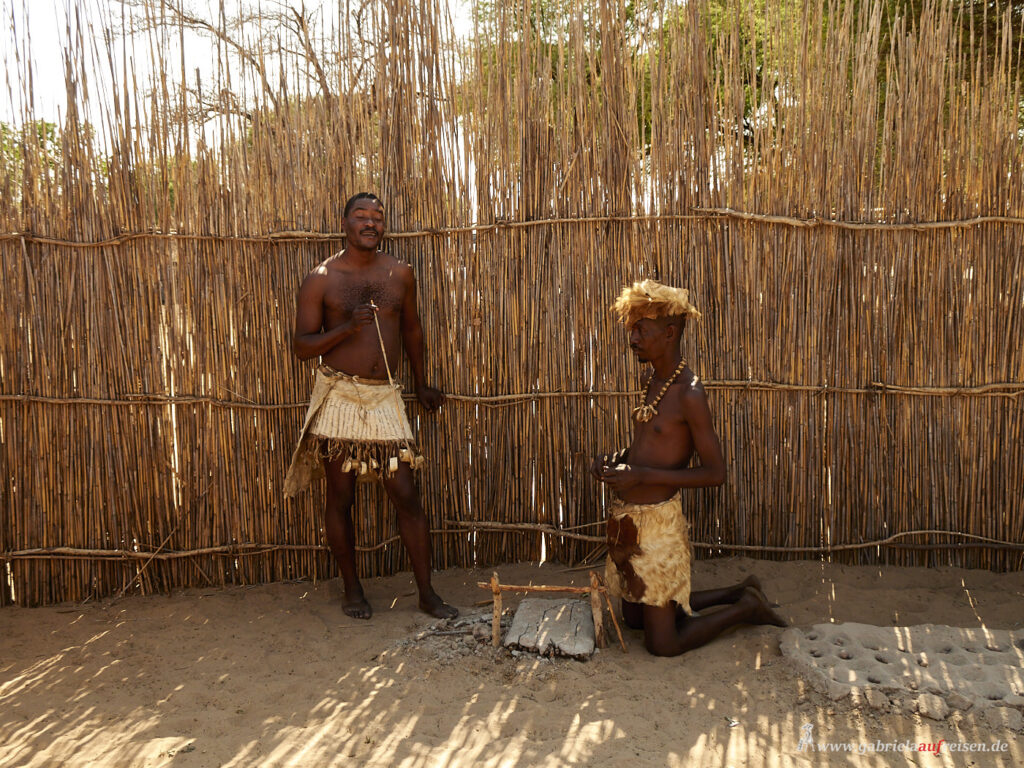
Music
In order to introduce us to the music, all line up, also the very small ones and give us much joy with singing and dancing.
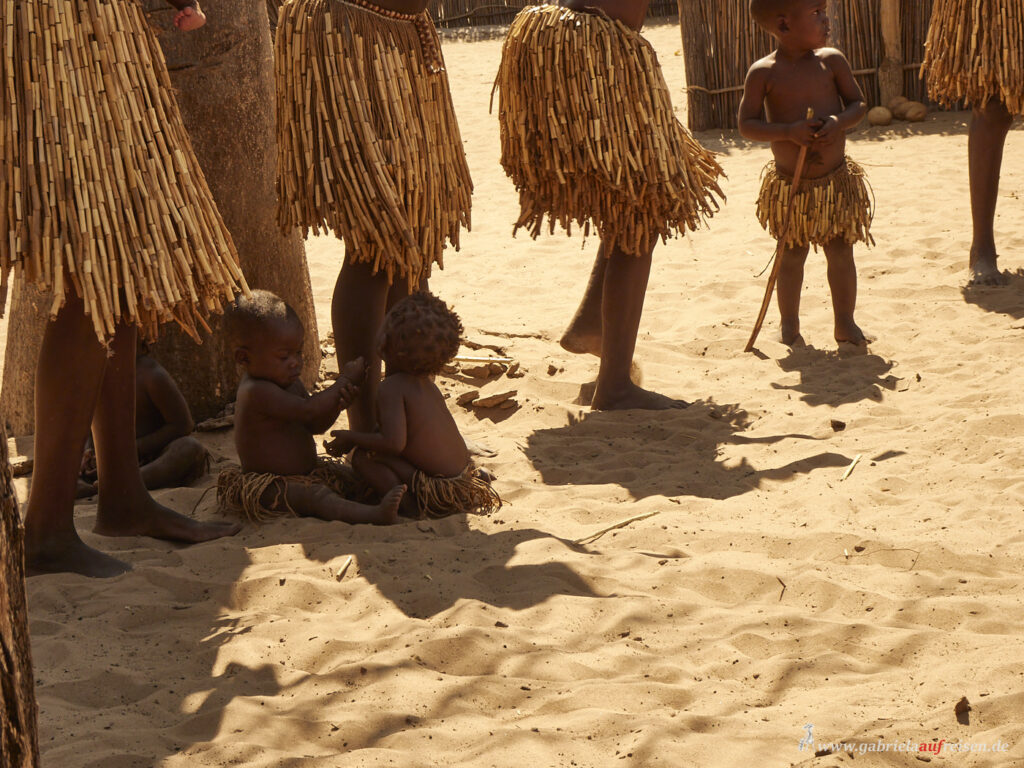
After that we will hear about the
Activities of the Women
This includes, of course, the gathering and preparation of legumes and berries. We are welcome to taste. Then we are shown how the ladies’ elaborate skirts are made. What a tremendous amount of work it is just to make the strings!
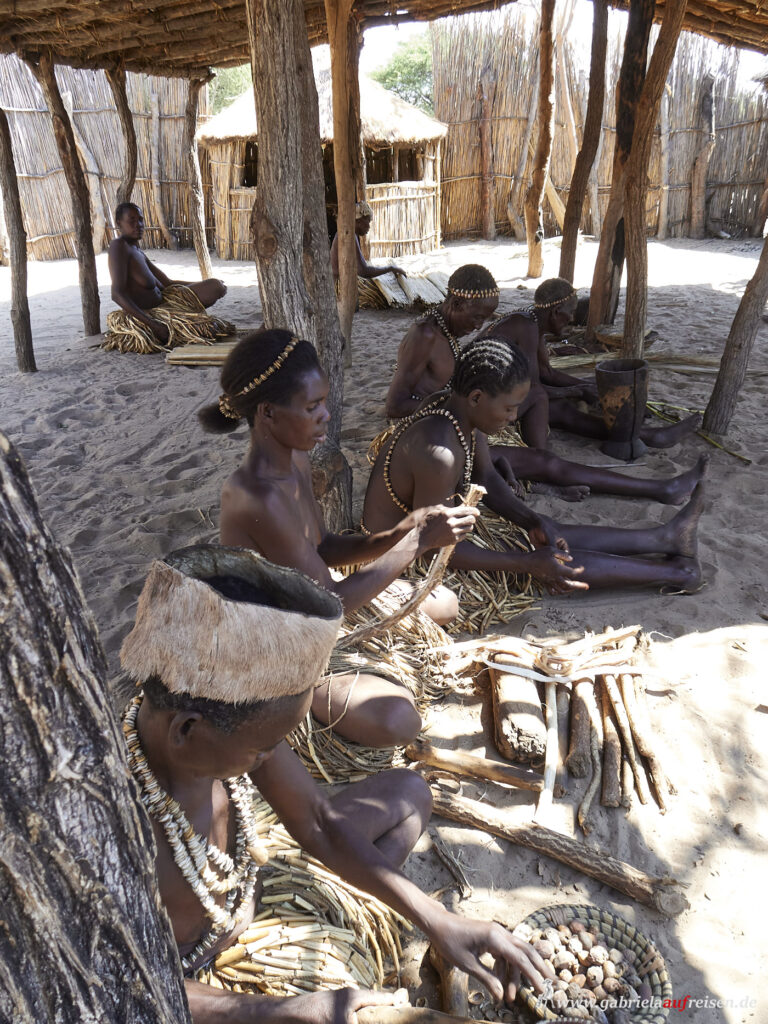
They also make elaborate bowls from plant fibers that are dyed with natural materials. I am very happy to buy one of these, which will then stand on my dining table as a fruit basket.
In the early afternoon we reach the
Nunda River Lodge
which is located directly at the Okavango. Here we are also very warmly welcomed by the German speaking owner.
Our luggage is already in our fixed tents with private open-air bath. Under the terrace the hippos are already roaring.
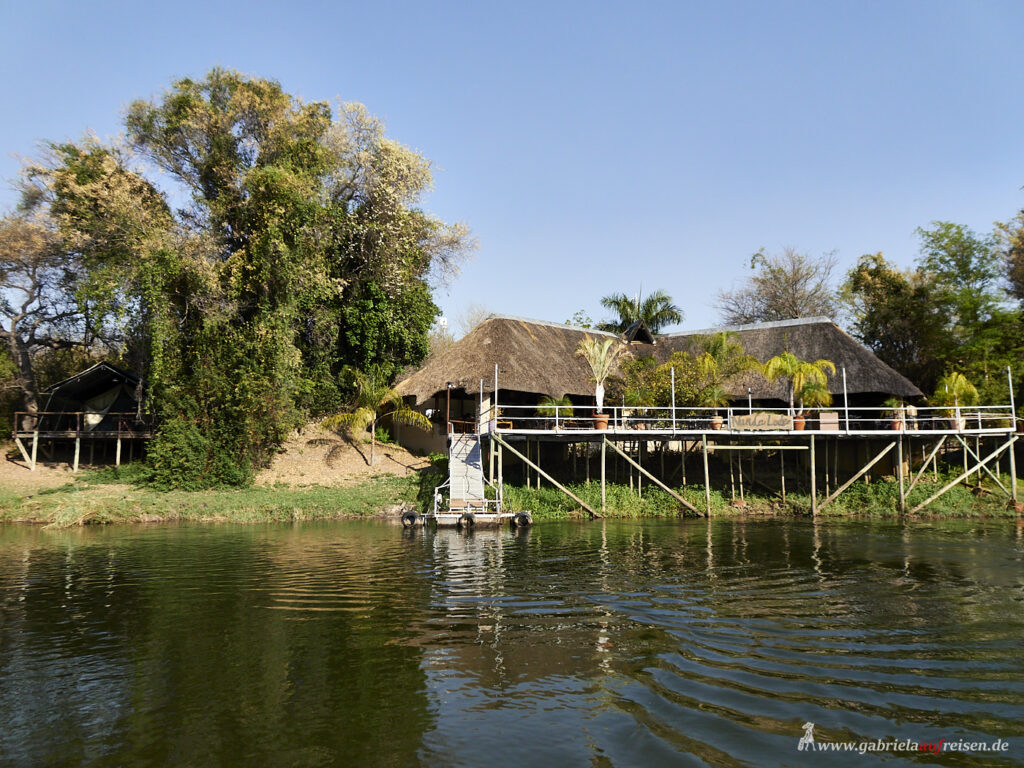
There is still some time to freshen up or to enjoy the view over the Okavango.
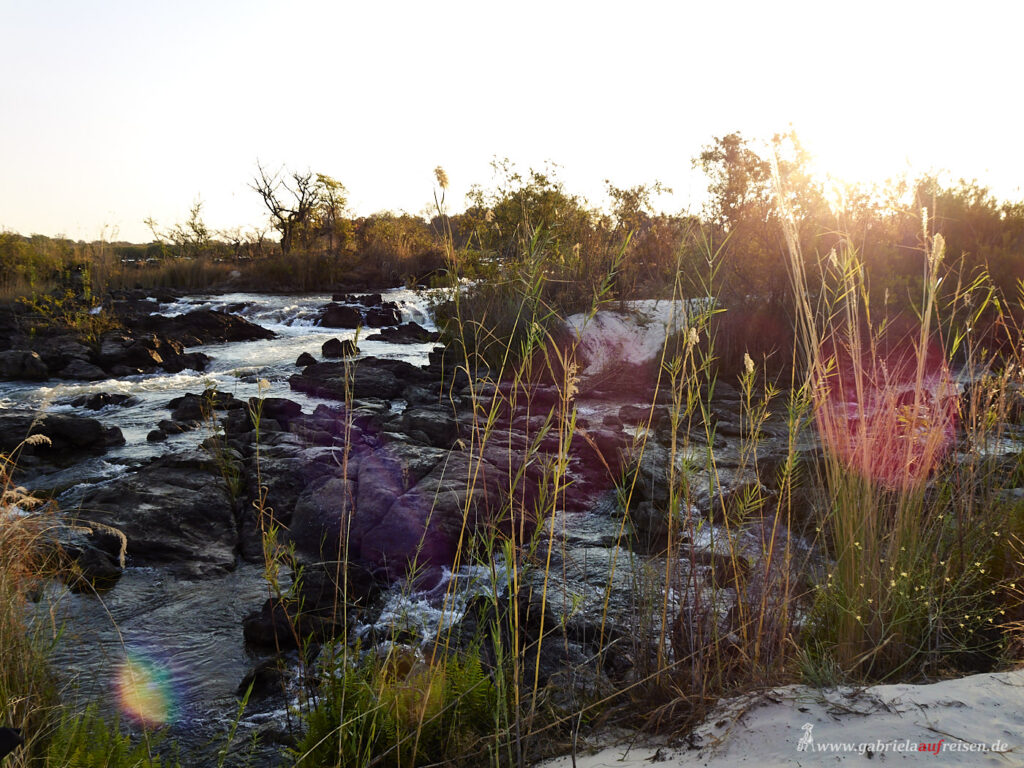
In the late afternoon we go by boat to explore this part of the Okavango. There are enough water birds and hippos on the way. We pass other lodges and soon reach the Popa Falls. They are not high, but impressive. Our boatman juggles our boat around rocks and past the shallows. Soon we reach a small island in the middle of the falls. It is safe from crocodiles and hippos, as the current around it is too strong for them.
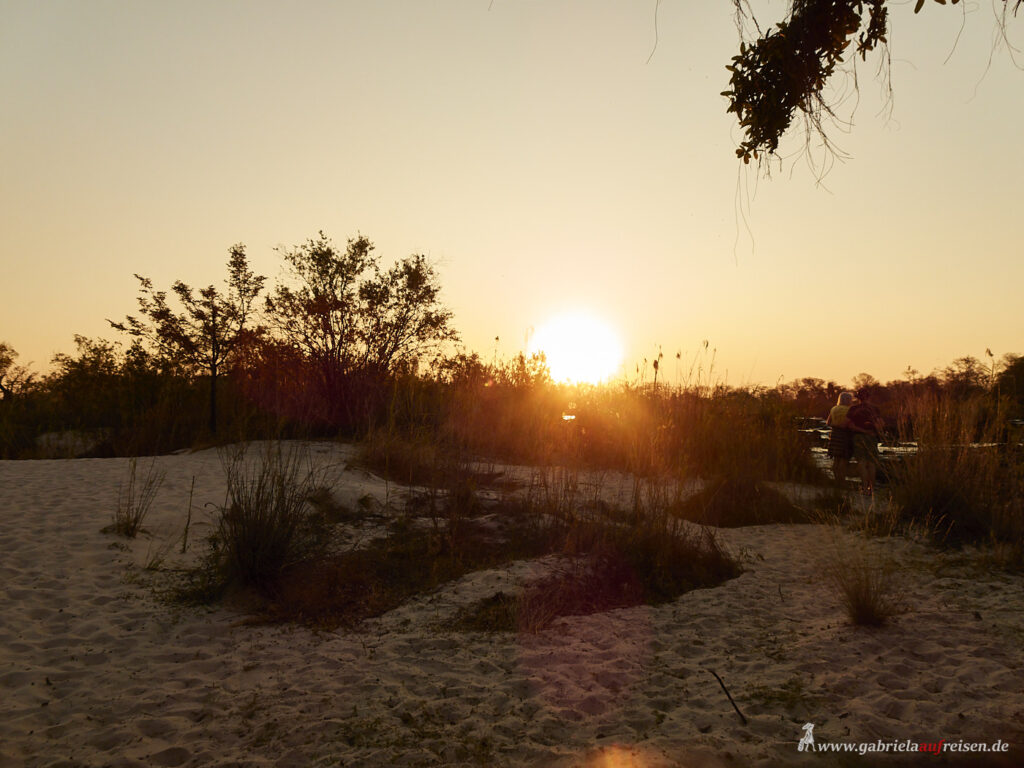
A small sundowner bar is set up for us and delicious appetizers are served. Everyone takes pictures of the setting sun and the waterfalls. Before it gets really dark, we have to drive back. It’s not very far and we don’t stop for photos now. Dinner is waiting for us!
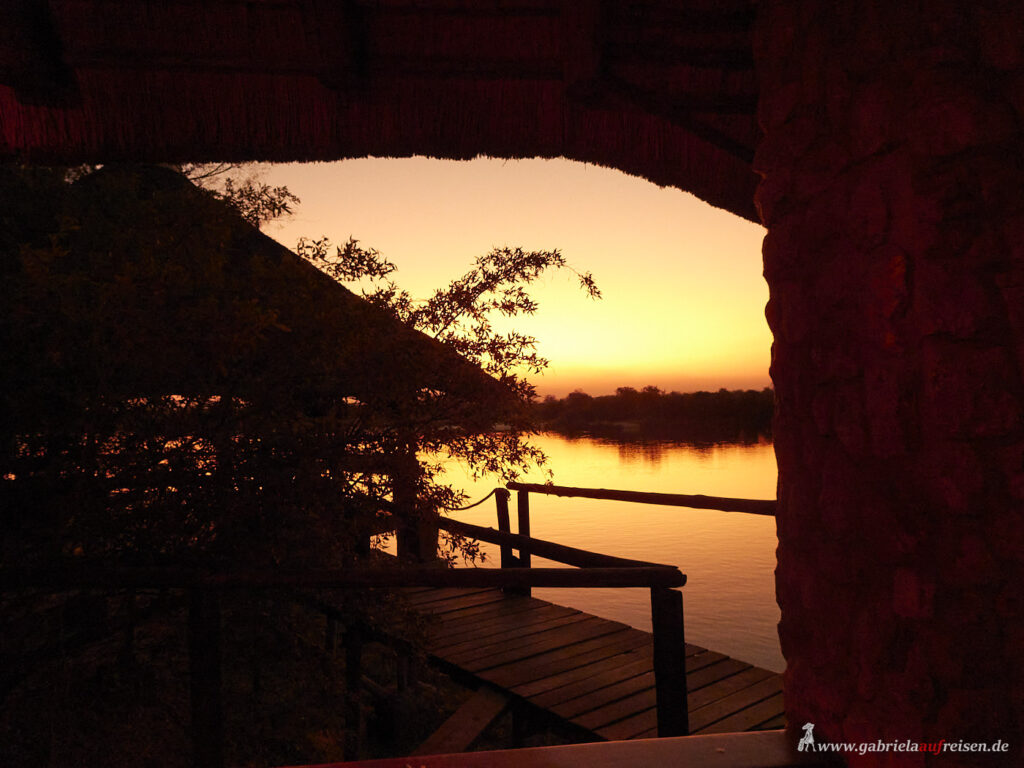
The next morning, we are all glad that we took a shower in the evening, because it is really cold! Around 10 degrees Celsius only and since the bathroom is partly open, a cat´s lick is enough for today.
Day trip in Bwabwata National Park
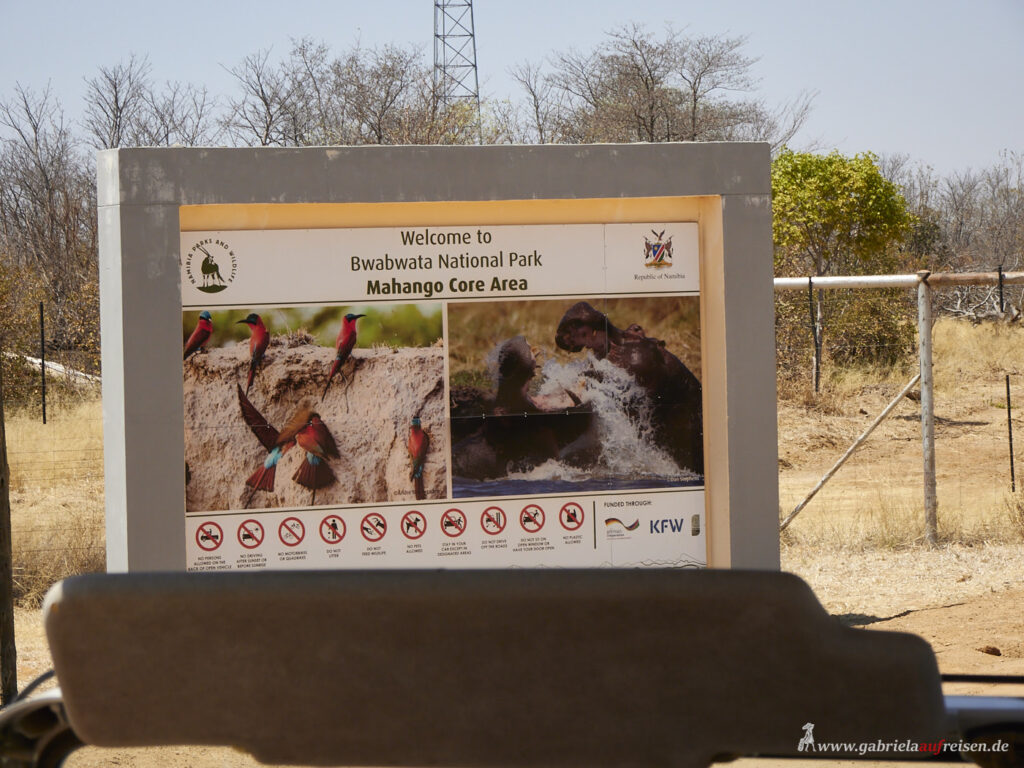
Today we do not start that early on our boat trip. A good 90 minutes we explore the other direction. Hippo groups greet us with loud snorts, some crocodiles warm up in the sun. Cattle are watered at the river and some people fetch water or bathe in the river.
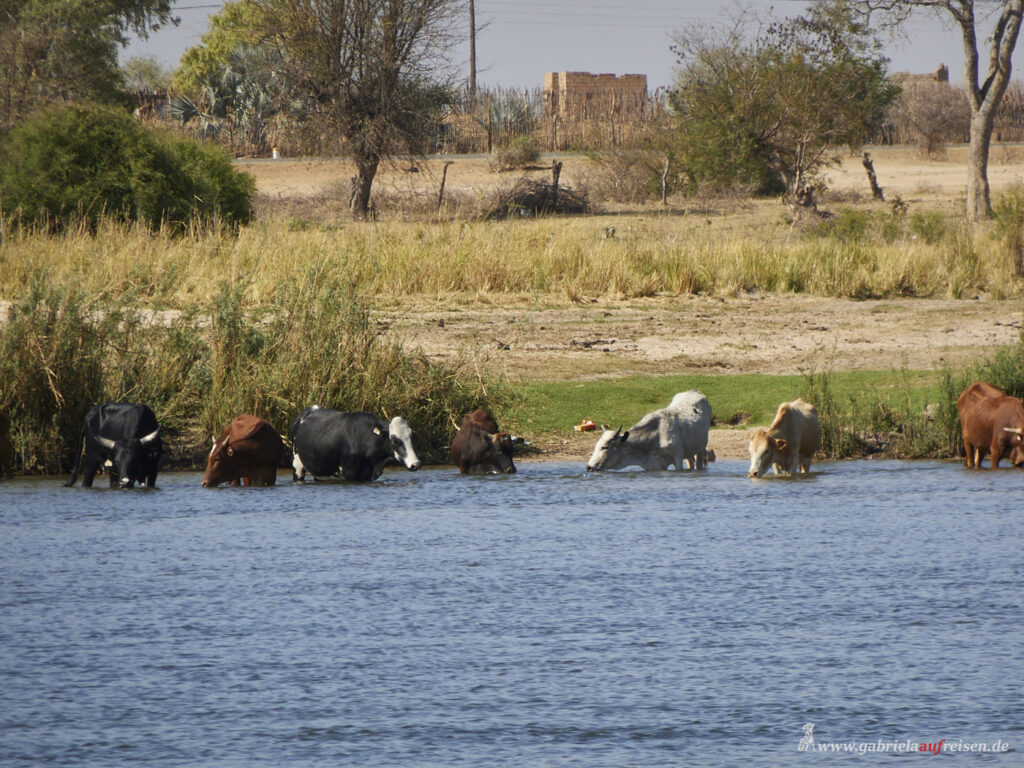
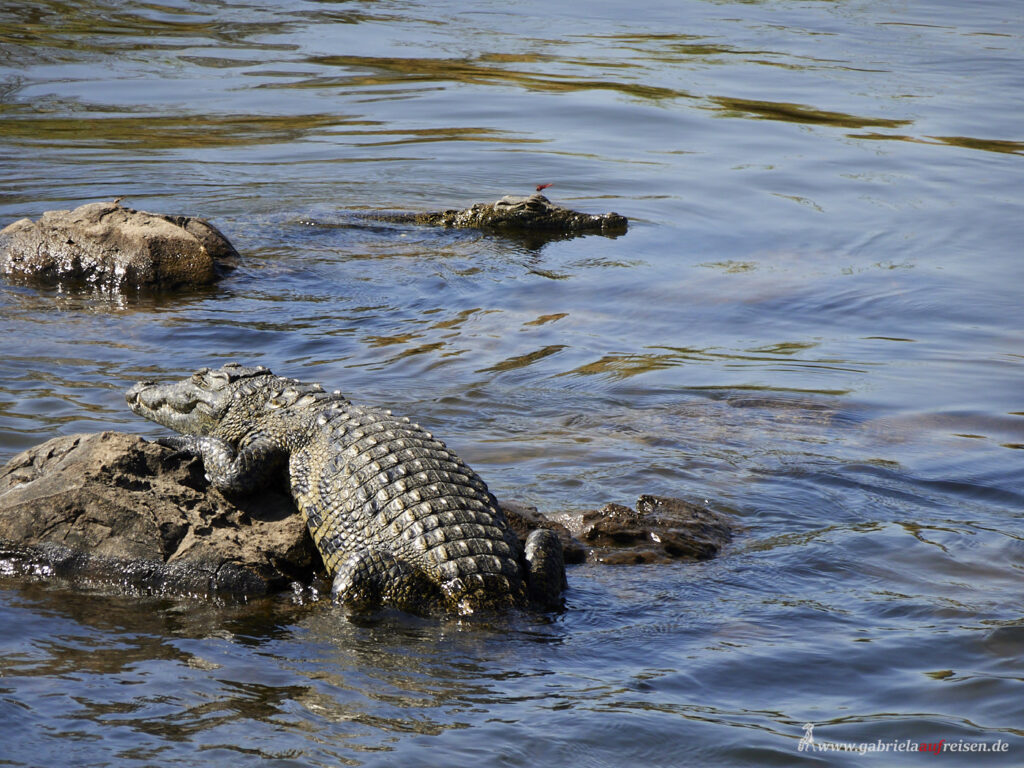
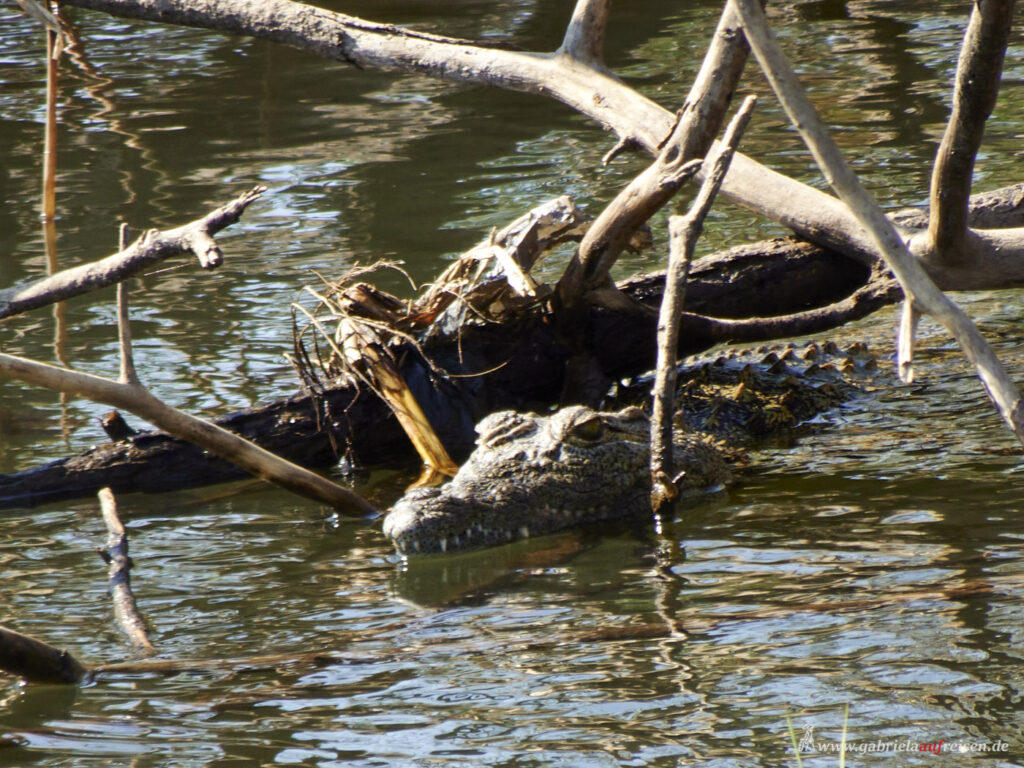
Safari by Jeep
Then we reach another lodge in the Bwabwata National Park. Two jeeps are already waiting for us, because now we are going on a game drive. It is already quite hot, and the animals don’t seem to like it that much either. We only see some kudus and impalas. But then five giraffes walk through the bush next to the sandy road that we are on. They don’t seem to mind the heat. They eat quite unimpressed from the young shoots of the trees. But even the birds are looking for the shade. It is almost 40 degrees, hard to believe that the night was so cold!
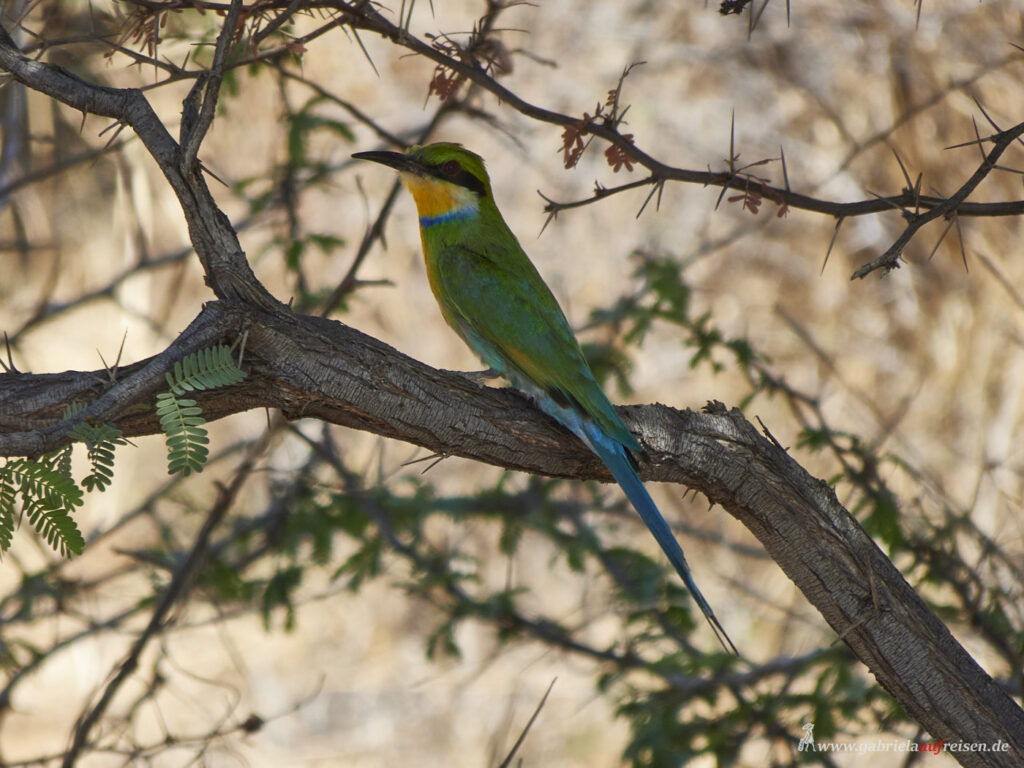
At the waterhole a gang of monkeys is waiting for us. They romp around on the big trees and look curiously down on us. We take a break; cold drinks are waiting for us in the box. What a relief!
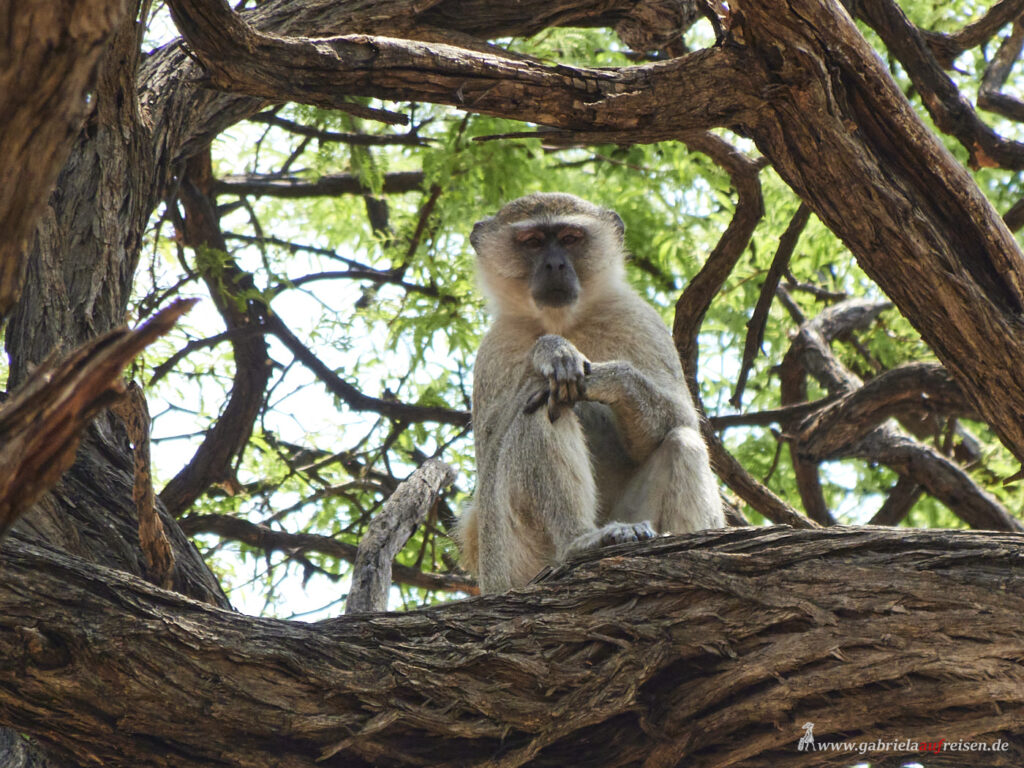
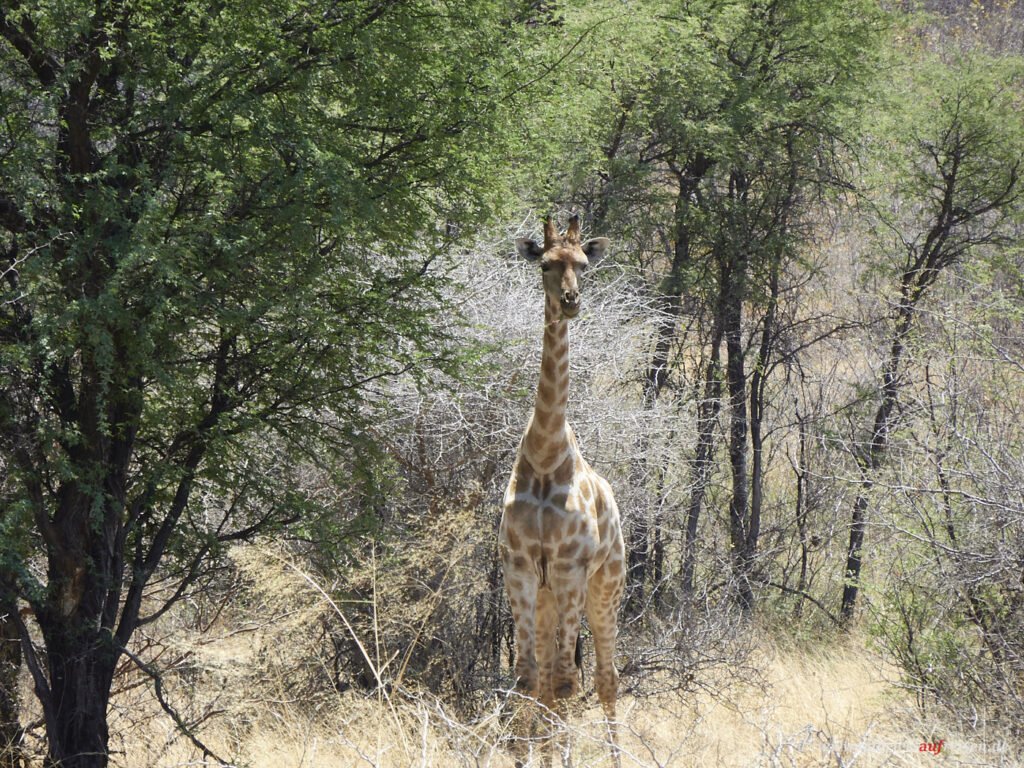
Surprise in Bwabwata National Park
The journey continues until we arrive again at the Okavango. We are still in the Bwabwata National Park. Some kind of rest area in the shade comes just in time to stretch our legs a bit.
We all duck walk towards the river where we can see lots of papyrus. What do we see among the trees? Our lodge has sent their cook here, who has set up a wonderful table together with other employees. A buffet in the bush! Wow!
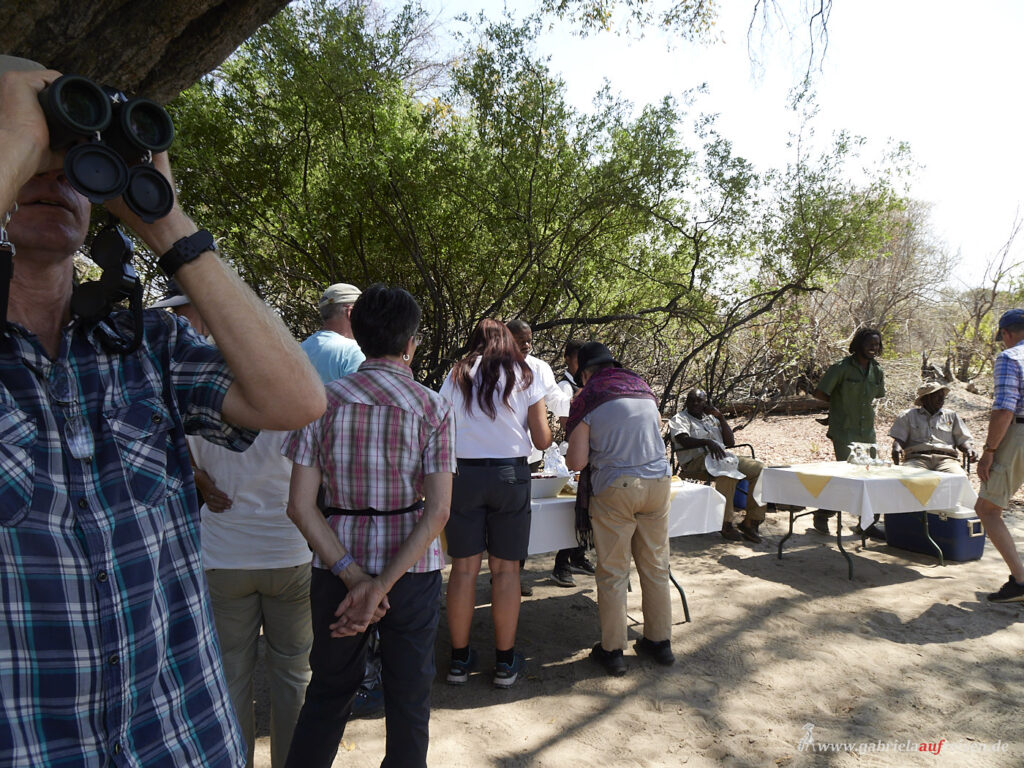
Potato salad, various meats, salads, etc. We are thrilled and hungry! The cook gets a big applause from us before we help ourselves.
And what is peeking out from between our bags? A squirrel or two. They would also like to eat with us, but of course we don’t feed wild animals. It can happen that a piece of bread falls off, can’t it?
Big game
Saturated and with a big grin on our faces we board the jeeps. The sandy lane leads along the river. Some animals now venture out and suddenly a couple of elephant bulls stand next to the path. We stop to let them pass. They ignore us, their thirst is probably greater than their curiosity about a few tourists in their “tin cans”.
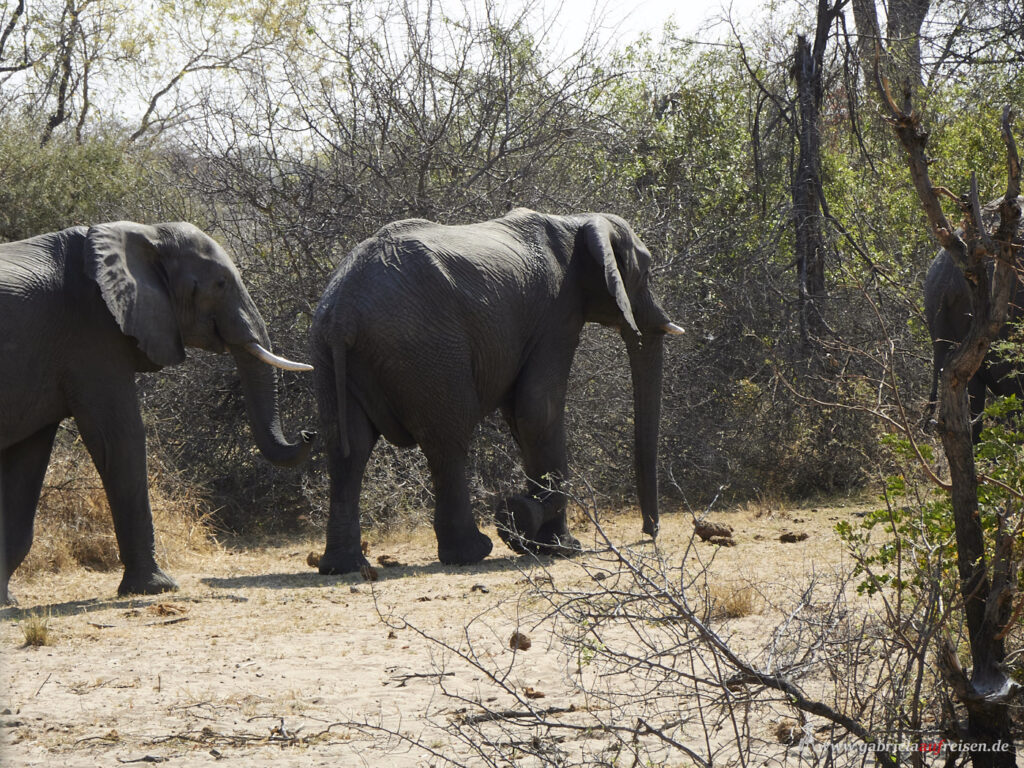
We are lucky and a good place to park comes up. Zebras are already at the river and some antelopes. Then the pachyderms of the Bwabwata National Park come out of the undergrowth. At the waterhole they chase away a small crocodile and then the elephants drink in peace.
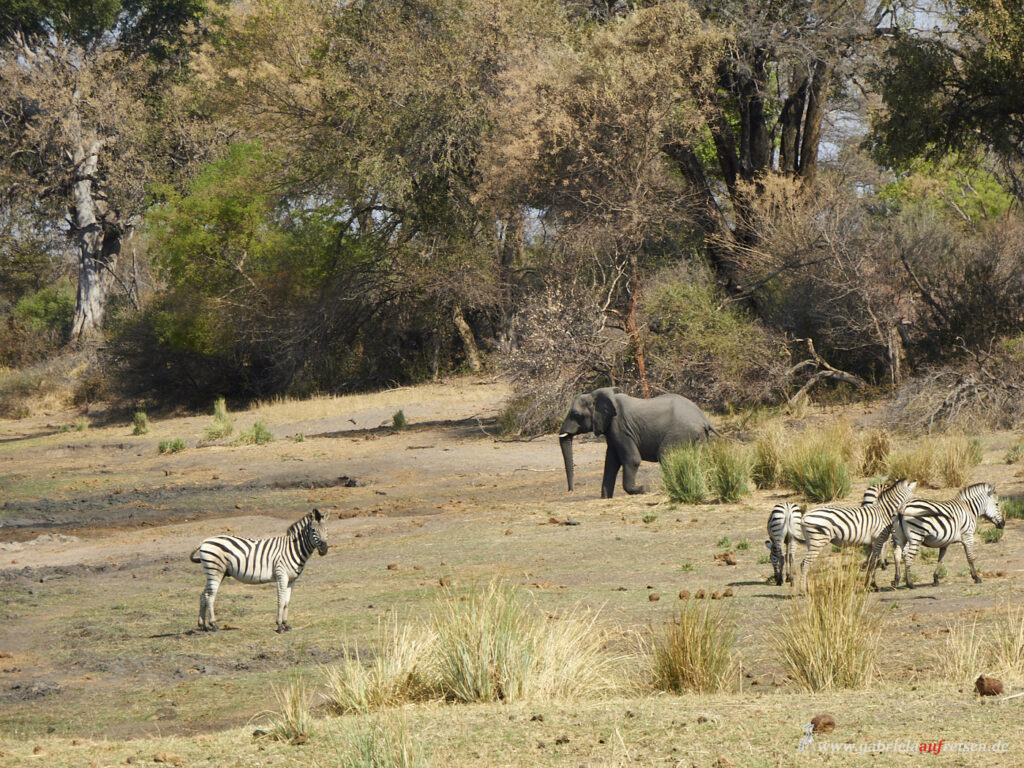
Now we have been able to see these wonderful animals today after all! Unfortunately, our time is up because the way back takes a little longer. Our drivers bring us back to the Nunda River Lodge, and we got just enough time left for a shower before again, we get a delicious meal!
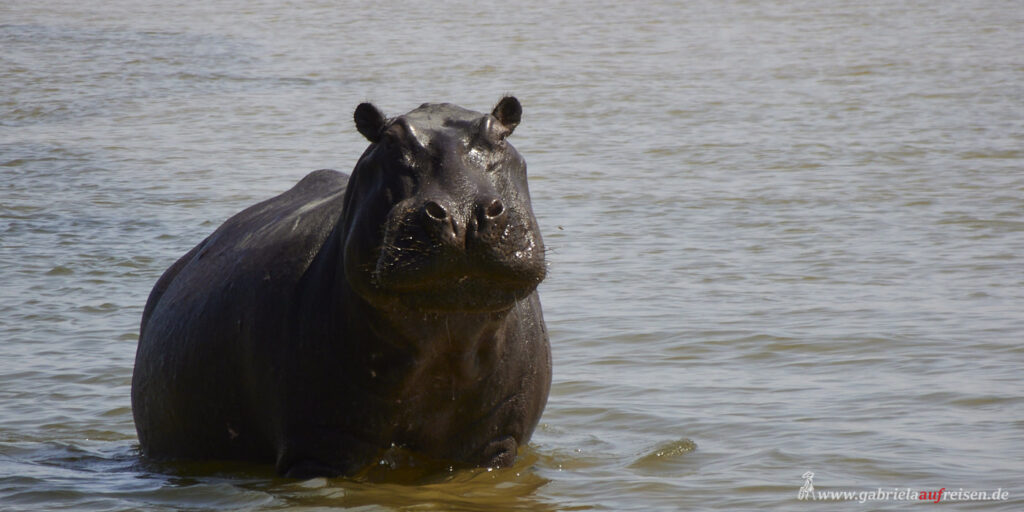
If you missed the last days, you could have a look here. And if you want to see more photos, infos and news, just check out Facebook, Instagram or Pinterest. So, I’m looking forward to your comments and “likes”!
Follow me!
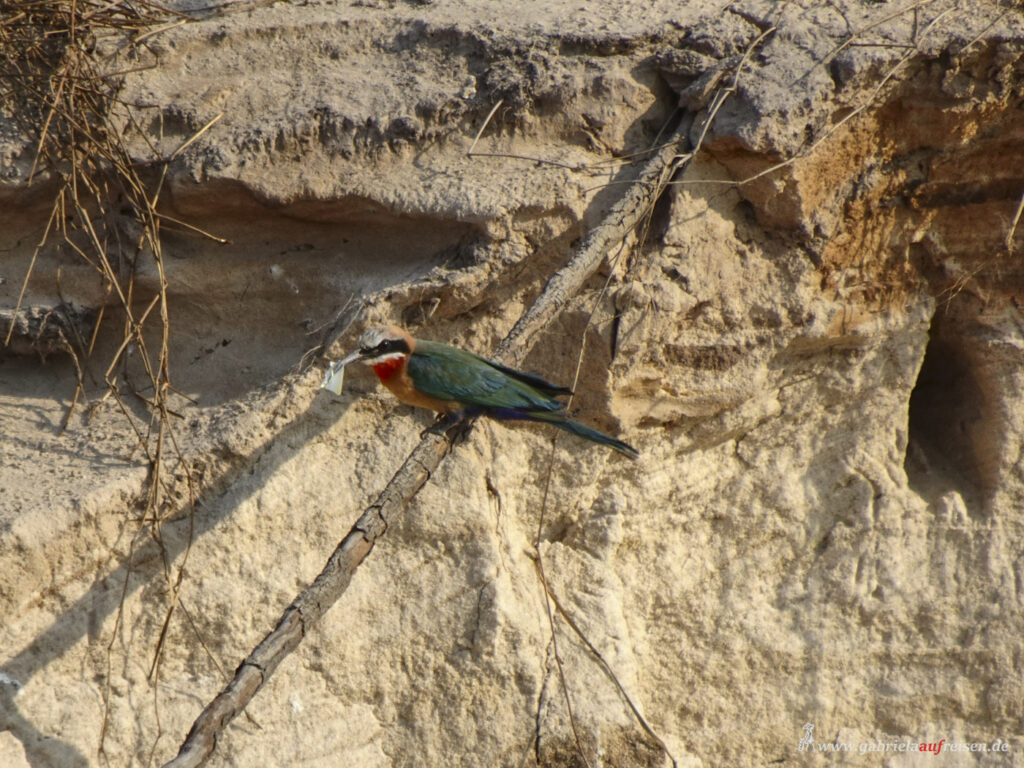
*
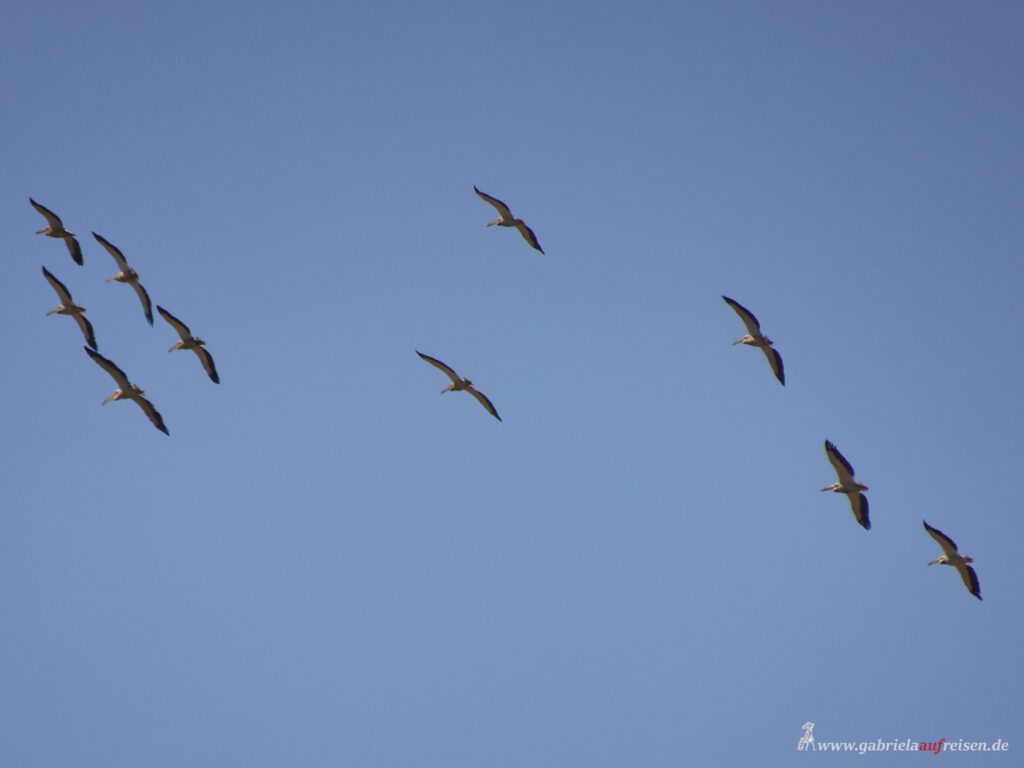
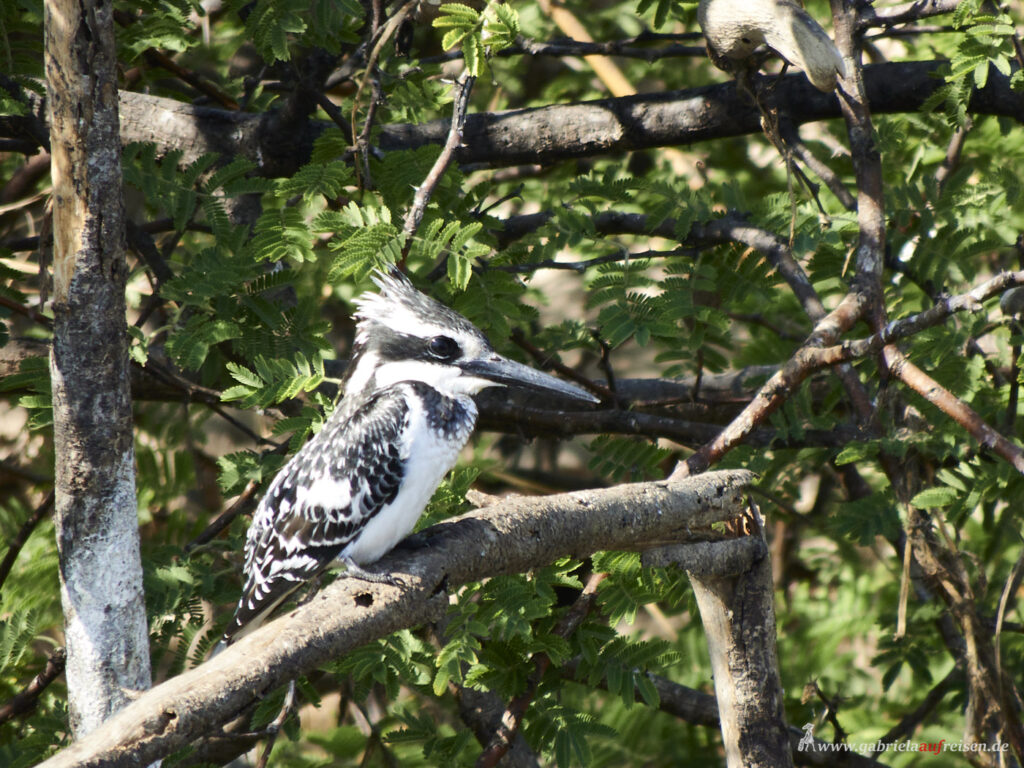
*This blog post contains unpaid advertisement. All I have written is my personal opinion. You´ll find affiliate links. If you buy a product through this link, you´ll not pay more, but I’ll get a small commission, that helps to go on with my blog.
Be First to Comment